While the Union Pacific and Burlington were certainly pioneers in the streamliner movement, other railroads introduced their own versions of streamlined trains. Some, such as Boston & Maine’s/Maine Central’s Flying Yankee, were imitations of the Zephyrs.
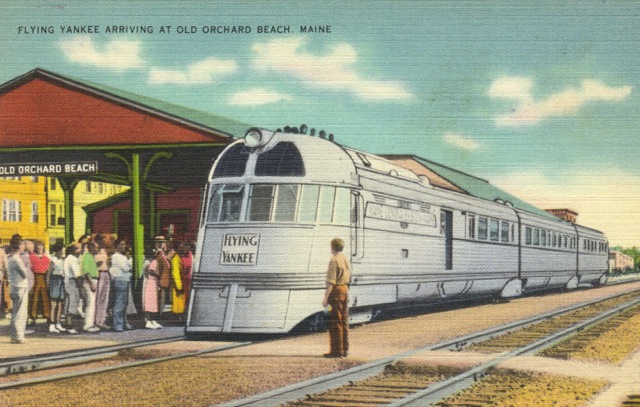
Others, such as Illinois Central’s Green Diamond, were imitations of the M-10000 series.
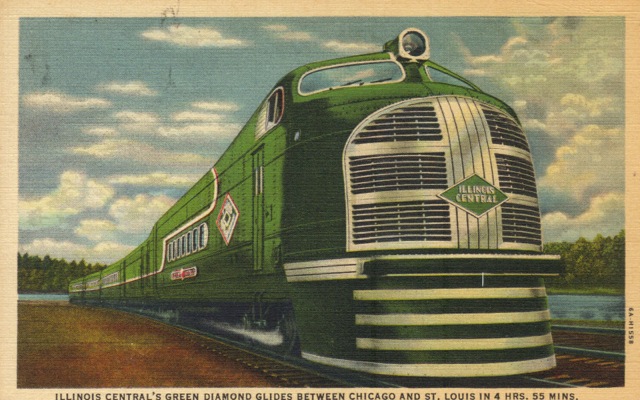
It took the Santa Fe Railway, direct competitor to the Union Pacific on the Chicago-Los Angeles route, to present the real future of streamliners. On May 12, 1936–one day before the Union Pacific began its 39-3/4-hour City of Los Angeles service using the M-10002–the Santa Fe initiated its own 39-3/4-hour train called the Super Chief. The train wasn’t streamlined at all; instead, Santa Fe demonstrated that what made streamlined trains fast was the use of Diesels instead of steam locomotives that had to make frequent and time-consuming stops for water.
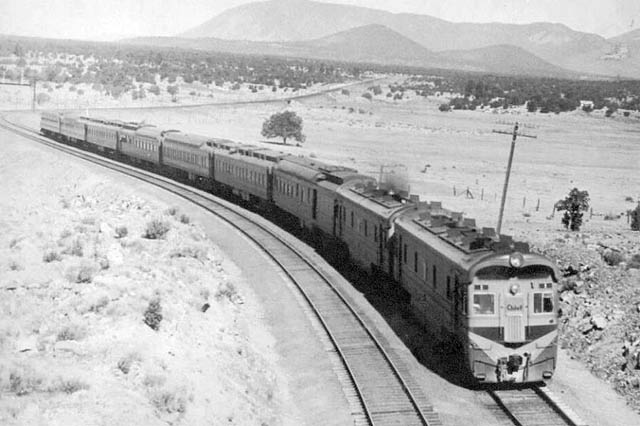
The first Super Chief consisted of seven heavyweight Pullman sleepers towed by two non-streamlined, 1,800-HP Diesels built by General Motors. The locomotives, both of which were numbered 1 even though they could be decoupled and operated separately, were painted olive green and blue with red trim, nothing like the famous Warbonnet scheme that would soon grace Santa Fe passenger locomotives. Nevertheless, by providing an exclusive, all-Pullman train, the Santa Fe showed that it was ready to compete with the Union Pacific’s City of Los Angeles.
A month before the Super Chief began, the Santa Fe had ordered its first streamliner, a nine-car train from Budd along with matching locomotives from GM. Santa Fe ordered that the locomotives be sheathed in stainless steel to go along with the train, but it was an artist in GM’s styling department named Leland Knickerbocker who came up with the bright red Warbonnet look.
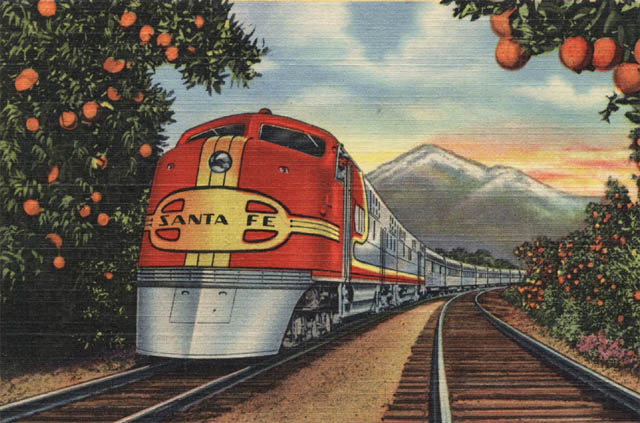
When that train took over as Super Chief in 1937, it forever redefined “streamliner.” First, the E1 locomotives were perhaps the most elegant engines ever to come out of General Motors’ Electro Motive Division, with an almost totally smooth front face and recessed headlight. General Motors would continue to make E2 through E9 locomotives, but none were as beautiful as Santa Fe’s E1s. (The E, by the way, supposedly stood for eighteen, as in 1,800 horsepower; while the F in General Motors’ smaller F-series of locomotives stood for fourteen, as in 1,400 horsepower. The horsepower ratings of both series of locomotives increased over time but the letter designations remained.)
Second, the train cars themselves were full sized–meaning the interiors were just as spacious as their heavyweight predecessors; Santa Fe ticket agents had no need to warn passengers that beds were necessarily narrower to fit in the smaller profile Zephyr and M-10000 series trains.

Santa Fe gave each of the cars exotic Indian names such as Cochiti and Oraibi, and finished the interiors with rare veneers such as Bubinga, Satinwood, and Zingana. The lounges were decorated with Southwest Indian art. Much of the design work was done by a Philadelphia architect named Paul Cret, who also helped design the Zephyr interiors as well as the stainless steel fluting on the outside of both the Zephyrs and Super Chief.
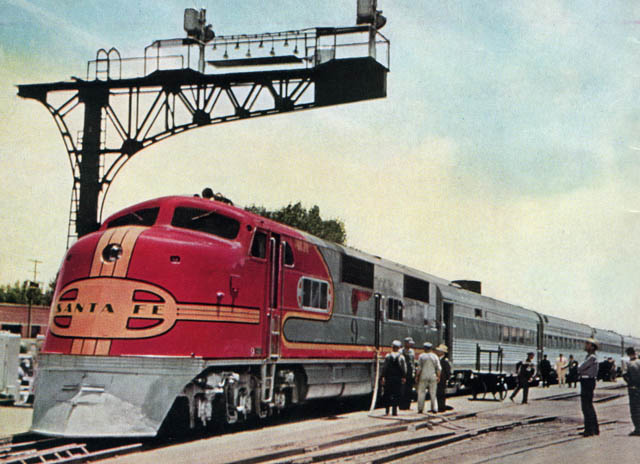
Santa Fe had one-upped the Union Pacific by making the Super Chief an exclusive Pullman train. But it wasn’t going to slight potential coach passengers. In 1938, it introduced a companion train, the El Capitan, that was made up exclusively of coaches, with a diner and lounges. The five-car train, pulled by a single E1, made the journey from Chicago to Los Angeles on the same 39-3/4-hour schedule as the Super Chief and City of Los Angeles. El Capitan riders had to pay a slight surcharge of up to $5 to ride it, instead of one of Santa Fe’s slower trains, between Chicago and Los Angeles.
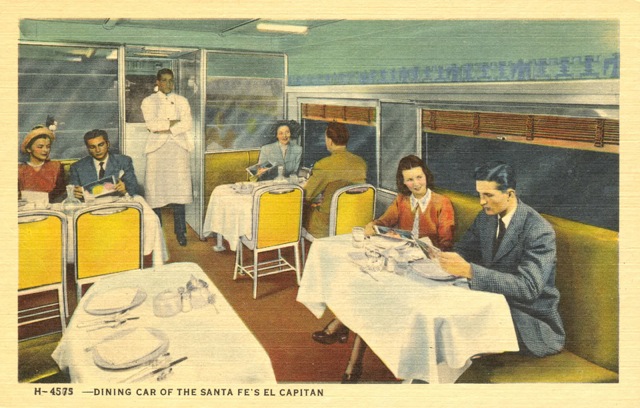
I don’t have any memorabilia from the 1936 or 1937 Super Chiefs, but I do have a nice, four-color brochure showing the El Capitan. Click on the cover image below to download the 7.5-MB file presenting all 24 pages of the brochure.
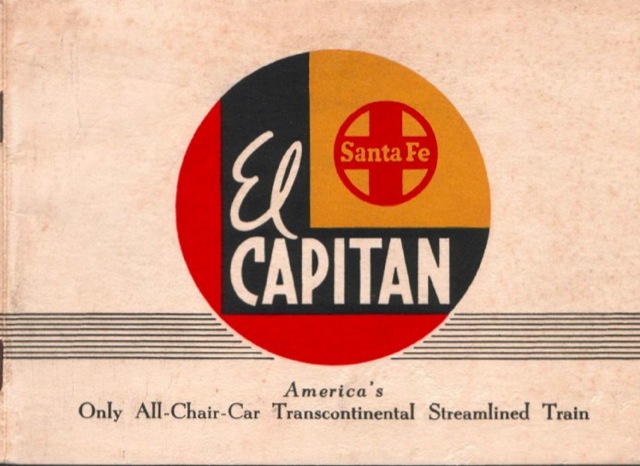
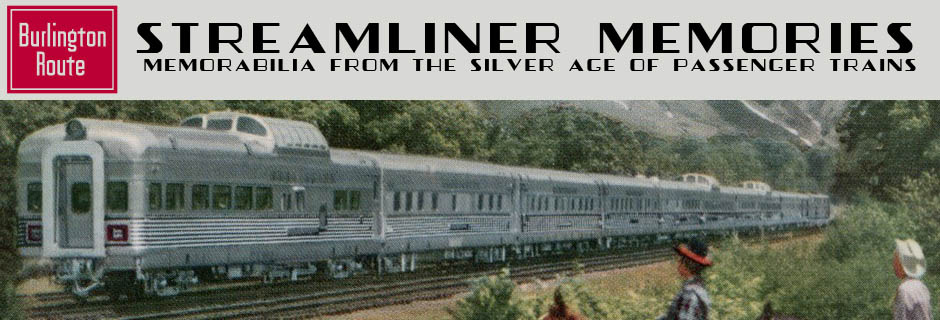
Randal, as you know, I LOVE the style and grace of the GM/EMD E-unit (and F-unit, too) streamlined locomotives, such as the Santa Fe power featured above.
Who built the early streamlined power units that you have images of here? I mean especially the Illinois Central and Union Pacific with the “turret-style” cabs. Was it GM/EMD? Or some other company?
The turret-style trains were built by Pullman which probably designed them. The shovel-nose zephyrs were designed by Budd, probably with the help of the Paul Cret architecture firm. EMD designed the E and F units, but only contributed engines to the zephyrs and M-1000x-series trains.
I guess I like the leading headlight of the E and F 7s (or perhaps earlier?) than the recessed headlight. I think it implies more command in some way. Especially when you get the dual headlights.
Martin